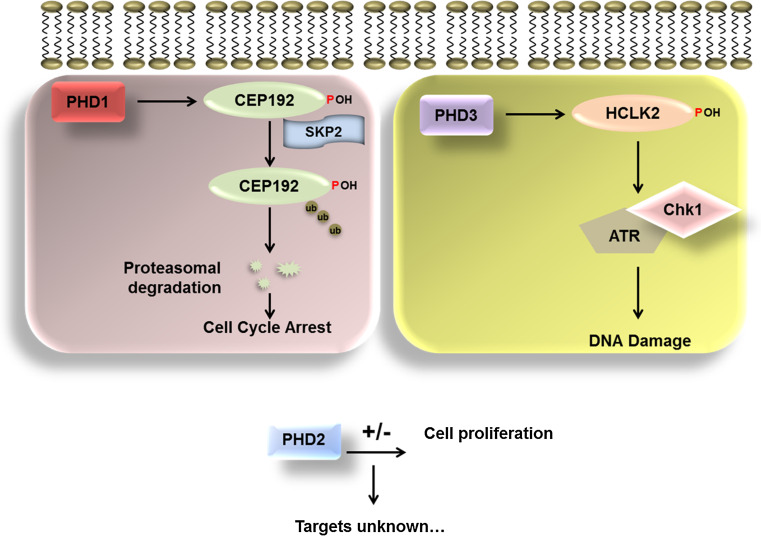Fig. 5.
The role of the PHDs in the cell cycle. Schematic diagram showing the roles played by PHD1, 2 and 3 in the cell cycle. PHD1 has been shown to regulate centrosome function and hence mitotic spindle formation through the regulation of the levels of Cep192. Hydroxylation of Cep192 mediates the polyubiquitination by the Skp2 E3 ligase and proteasomal degradation. PHD3 is known to play a key role in the DNA damage response through its ability to hydroxylate HCLK2. Hydroxylation of HCLK2 leads to activation of ATR Chk1 pathway which causes cell cycle arrest. The role of PHD2 in the cell cycle is less clear. Several studies have shown that PHD2 leads to increased proliferation while others have shown a decrease in cell proliferation. Currently, there are no other validated cell cycle targets of PHD2 other than HIFα

